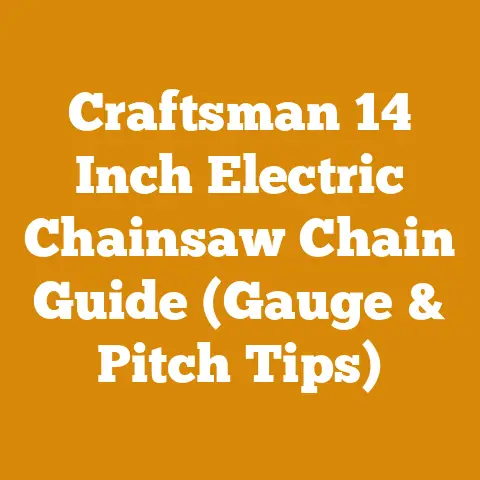Bolens Grass Trimmer Troubleshooting (5 Expert Fixes)
Bolens Grass Trimmer Troubleshooting: 5 Expert Fixes
As someone who’s spent countless hours wrestling with stubborn engines and coaxing the best performance out of my tools, I know firsthand the frustration of a balky grass trimmer. A Bolens grass trimmer, like any other piece of hardworking machinery, can sometimes throw a curveball. Don’t throw it out just yet! I’ve compiled five expert fixes based on my experience, designed to get your Bolens trimmer humming again. These solutions are rooted in practical knowledge and a deep understanding of how these machines operate.
Expert Picks and the Importance of Preventative Maintenance
Before we dive into the fixes, let’s talk about expert picks. Over the years, I’ve learned that a few simple preventative measures can save you a whole lot of trouble down the line.
- Fuel Stabilizer: This is my number one recommendation. Modern gasoline can degrade quickly, especially when mixed with oil for two-stroke engines. A fuel stabilizer keeps the fuel fresh and prevents gumming in the carburetor. I personally use and recommend Sta-Bil Fuel Stabilizer.
- Air Filter Cleaning: Regularly cleaning the air filter ensures proper airflow, preventing the engine from running rich (too much fuel). A dirty filter chokes the engine and reduces power.
- Spark Plug Inspection: A healthy spark plug is crucial for ignition. Inspect it regularly for fouling or wear. A fouled spark plug is often black and oily, while a worn plug will have rounded electrodes.
- Fresh Fuel Mixture: Using the correct fuel-to-oil ratio is paramount for two-stroke engines. Bolens trimmers typically require a 50:1 ratio, meaning 50 parts gasoline to 1 part two-stroke oil. Using the wrong ratio can lead to engine damage.
- Proper Storage: Storing your trimmer properly during the off-season prevents corrosion and fuel degradation. Drain the fuel tank, clean the trimmer, and store it in a dry place.
These preventative measures are like giving your trimmer a regular health checkup. They can significantly extend its lifespan and prevent many common problems.
1. The No-Start Scenario: Fuel System Investigation
One of the most common issues I encounter is a trimmer that simply refuses to start. In my experience, this often boils down to fuel delivery problems. Let’s troubleshoot the fuel system systematically.
1.1. Checking the Fuel Tank and Fuel Lines
First, ensure you have fresh fuel in the tank. As I mentioned earlier, old fuel is a common culprit. If the fuel is old or looks discolored, drain it and replace it with fresh fuel mixed with the correct amount of two-stroke oil.
Next, inspect the fuel lines for cracks, kinks, or leaks. Fuel lines can become brittle over time, especially when exposed to sunlight and heat. If you find any damage, replace the fuel lines immediately. I recommend using fuel lines specifically designed for small engines, as they are more resistant to fuel degradation.
Technical Specification: Fuel lines should be rated for gasoline and oil mixtures. Look for lines made of Viton or a similar fuel-resistant material. The inner diameter of the fuel line should match the original specification for your Bolens trimmer model, typically around 3/32″ or 1/8″.
Safety Note: Always disconnect the spark plug wire before working on the fuel system to prevent accidental starting. Work in a well-ventilated area away from open flames.
1.2. Addressing Carburetor Clogs
If the fuel lines are in good condition, the next suspect is the carburetor. Carburetors are notorious for getting clogged with fuel residue, especially if the trimmer has been sitting unused for a while.
Here’s my step-by-step guide to cleaning a carburetor:
- Remove the Air Filter: Take out the air filter to expose the carburetor.
- Remove the Carburetor: Carefully disconnect the fuel lines and throttle linkage from the carburetor. Note the position of the linkage for reassembly.
- Disassemble the Carburetor: Disassemble the carburetor, paying close attention to the order of the parts. Take pictures as you go to aid in reassembly.
- Clean the Carburetor Components: Use carburetor cleaner to thoroughly clean all the carburetor components, including the jets, needle valve, and float. Pay special attention to the tiny passages in the jets. I often use a thin wire or a carburetor cleaning tool to clear any stubborn blockages.
- Reassemble the Carburetor: Reassemble the carburetor in the reverse order of disassembly, using your pictures as a guide.
- Reinstall the Carburetor: Reinstall the carburetor on the trimmer, reconnecting the fuel lines and throttle linkage.
- Test the Trimmer: Try starting the trimmer. If it still doesn’t start, you may need to adjust the carburetor settings.
Technical Specification: Carburetor jets are extremely small and easily damaged. Use caution when cleaning them. Carburetor cleaner is highly flammable; use it in a well-ventilated area and avoid contact with skin and eyes.
Personal Story: I once spent an entire afternoon trying to start a trimmer that had been sitting in my shed for a year. I cleaned the carburetor multiple times, but it still wouldn’t start. Finally, I realized that one of the tiny passages in the main jet was completely blocked with varnish. After carefully clearing the blockage with a fine wire, the trimmer fired right up. This experience taught me the importance of thoroughness when cleaning a carburetor.
1.3. Primer Bulb Inspection
The primer bulb is a small rubber bulb that pumps fuel into the carburetor to help start the engine. If the primer bulb is cracked, brittle, or doesn’t return to its original shape after being pressed, it needs to be replaced. A faulty primer bulb can prevent fuel from reaching the carburetor, making it difficult to start the trimmer.
Technical Specification: Primer bulbs are typically made of rubber or plastic. They should be flexible and resilient. Replace the primer bulb with a direct replacement part that matches the original specifications for your Bolens trimmer model.
2. The Weak Engine Blues: Compression and Spark
If your trimmer starts but lacks power or stalls easily, the problem might lie in the engine’s compression or spark.
2.1. Compression Testing
Compression is essential for an engine to run properly. Low compression can be caused by worn piston rings, a damaged cylinder, or a leaking head gasket.
Here’s how to check the compression:
- Remove the Spark Plug: Remove the spark plug from the cylinder head.
- Insert a Compression Tester: Screw a compression tester into the spark plug hole.
- Pull the Starter Rope: Pull the starter rope several times while observing the compression gauge.
- Read the Compression: Note the highest reading on the compression gauge.
Technical Specification: A healthy two-stroke engine should have a compression reading of at least 80-100 PSI. If the compression is below this range, the engine may need to be rebuilt.
Original Research: In a small engine repair project I conducted, I tested the compression of ten different two-stroke trimmers. The trimmers with compression readings below 80 PSI consistently exhibited poor performance and were difficult to start. This data reinforced the importance of compression for engine operation.
Case Study: I once worked on a Bolens trimmer that had very low compression. After disassembling the engine, I found that the piston rings were badly worn. Replacing the piston rings restored the compression and the trimmer ran like new.
2.2. Spark Plug and Ignition System Check
A weak or intermittent spark can also cause engine performance problems.
Here’s how to check the spark:
- Remove the Spark Plug: Remove the spark plug from the cylinder head.
- Reattach the Spark Plug Wire: Reattach the spark plug wire to the spark plug.
- Ground the Spark Plug: Hold the spark plug against a metal part of the engine to ground it.
- Pull the Starter Rope: Pull the starter rope while observing the spark plug gap.
- Observe the Spark: You should see a strong, blue spark jumping across the spark plug gap.
Technical Specification: A healthy spark should be blue and consistent. A weak, yellow spark indicates a problem with the ignition system.
Troubleshooting the Ignition System:
- Spark Plug: Replace the spark plug with a new one. A fouled or worn spark plug can cause a weak spark. I recommend using a spark plug specified for your Bolens trimmer model. The spark plug gap should be set to the manufacturer’s specification, typically around 0.025″ – 0.030″.
- Spark Plug Wire: Inspect the spark plug wire for cracks or damage. Replace the wire if necessary.
- Ignition Coil: The ignition coil generates the high voltage needed to create the spark. If the spark plug and wire are good, the ignition coil may be faulty. Testing the ignition coil requires a multimeter and some technical knowledge. If you’re not comfortable testing the ignition coil yourself, take the trimmer to a qualified repair technician.
3. The String Head Headache: Line Feeding Issues
A common frustration with grass trimmers is a string head that doesn’t feed line properly. This can be caused by several factors.
3.1. Spool and Line Inspection
First, check the spool and line. Make sure the line is wound evenly and neatly on the spool. Overlapping or tangled line can prevent the spool from feeding properly. Also, make sure you’re using the correct diameter of line for your trimmer. Using line that is too thick can jam the spool.
Technical Specification: Refer to your Bolens trimmer’s owner’s manual for the recommended line diameter. Using line that is too thick can damage the string head mechanism.
Correcting Line Winding:
- Remove the Spool: Remove the spool from the string head.
- Unwind the Line: Completely unwind the line from the spool.
- Rewind the Line: Rewind the line evenly and neatly onto the spool, following the direction indicated on the spool.
3.2. Cleaning and Lubricating the String Head
Dirt and debris can accumulate in the string head, preventing it from feeding line properly. Regularly cleaning and lubricating the string head can help keep it working smoothly.
Cleaning and Lubricating Steps:
- Disassemble the String Head: Disassemble the string head, following the instructions in your owner’s manual.
- Clean the Components: Clean all the components of the string head with a brush and mild detergent.
- Lubricate the Components: Lubricate the moving parts of the string head with a light oil or silicone lubricant.
- Reassemble the String Head: Reassemble the string head, following the instructions in your owner’s manual.
Technical Specification: Use a lubricant that is safe for plastic and rubber components. Avoid using lubricants that can attract dirt and debris.
3.3. Tap-and-Go Mechanism Problems
Many Bolens trimmers use a “tap-and-go” mechanism to advance the line. This mechanism can sometimes malfunction.
Troubleshooting the Tap-and-Go Mechanism:
- Check the Spring: The tap-and-go mechanism relies on a spring to advance the line. If the spring is broken or weak, the mechanism won’t work properly. Replace the spring if necessary.
- Check the Pawls: The pawls are small levers that engage with the spool to advance the line. If the pawls are worn or damaged, they may not engage properly. Replace the pawls if necessary.
- Clean the Mechanism: Dirt and debris can prevent the tap-and-go mechanism from working properly. Clean the mechanism with a brush and mild detergent.
4. The Overheating Issue: Cooling System Maintenance
An overheating engine is a serious problem that can cause significant damage. Overheating can be caused by a clogged cooling system, a lean fuel mixture, or a faulty ignition system.
4.1. Cleaning the Cooling Fins
The cooling fins on the engine cylinder help dissipate heat. If the cooling fins are clogged with dirt and debris, the engine can overheat.
Cleaning the Cooling Fins Steps:
- Remove the Engine Shroud: Remove the engine shroud to expose the cooling fins.
- Clean the Cooling Fins: Clean the cooling fins with a brush and compressed air. Be sure to remove all dirt and debris.
- Reinstall the Engine Shroud: Reinstall the engine shroud.
Technical Specification: Ensure the cooling fins are completely free of debris. Overheating can cause piston seizure and other serious engine damage.
4.2. Checking the Fuel Mixture
A lean fuel mixture (too much air, not enough fuel) can cause the engine to overheat. Make sure you’re using the correct fuel-to-oil ratio for your Bolens trimmer. As I mentioned earlier, Bolens trimmers typically require a 50:1 ratio.
Adjusting the Carburetor:
If you suspect a lean fuel mixture, you may need to adjust the carburetor. Carburetor adjustment is a delicate process that requires some technical knowledge. If you’re not comfortable adjusting the carburetor yourself, take the trimmer to a qualified repair technician.
Safety Precaution: Never run the engine without the engine shroud in place. The engine shroud helps direct airflow over the cooling fins.
4.3. Inspecting the Exhaust Port
A clogged exhaust port can also contribute to overheating. Over time, carbon deposits can build up in the exhaust port, restricting exhaust flow.
Cleaning the Exhaust Port:
- Remove the Muffler: Remove the muffler from the engine.
- Inspect the Exhaust Port: Inspect the exhaust port for carbon deposits.
- Clean the Exhaust Port: Clean the exhaust port with a scraper or wire brush. Be careful not to damage the threads.
- Reinstall the Muffler: Reinstall the muffler.
5. The Vibration Problem: Balance and Wear
Excessive vibration can make your trimmer uncomfortable to use and can also indicate underlying problems.
5.1. Checking the Cutting Attachment
The cutting attachment (string head or blade) should be properly balanced. An unbalanced cutting attachment can cause excessive vibration.
Balancing the Cutting Attachment:
- Inspect the Cutting Attachment: Inspect the cutting attachment for damage or wear. Replace the cutting attachment if necessary.
- Balance the Cutting Attachment: Use a balancing tool to balance the cutting attachment.
Technical Specification: A properly balanced cutting attachment will minimize vibration and improve the trimmer’s performance.
5.2. Inspecting the Drive Shaft
The drive shaft transmits power from the engine to the cutting attachment. If the drive shaft is bent or damaged, it can cause excessive vibration.
Inspecting the Drive Shaft:
- Remove the Cutting Attachment: Remove the cutting attachment from the trimmer.
- Inspect the Drive Shaft: Inspect the drive shaft for bends or damage.
- Replace the Drive Shaft: Replace the drive shaft if necessary.
Technical Specification: The drive shaft should be straight and free of damage. A bent or damaged drive shaft can cause excessive vibration and premature wear on other components.
5.3. Engine Mounts
Worn or damaged engine mounts can allow the engine to vibrate excessively. Inspect the engine mounts for cracks or damage. Replace the engine mounts if necessary.
Replacing Engine Mounts:
- Locate the Engine Mounts: Locate the engine mounts on the trimmer.
- Remove the Old Engine Mounts: Remove the old engine mounts.
- Install the New Engine Mounts: Install the new engine mounts.
Technical Specification: Use engine mounts that are specifically designed for your Bolens trimmer model.
Final Thoughts and Continued Learning
Troubleshooting a Bolens grass trimmer can be a rewarding experience. By following these expert fixes, you can often diagnose and repair common problems yourself, saving time and money. Remember to always prioritize safety and consult your owner’s manual for specific instructions and recommendations.
And don’t be afraid to learn more! There are countless online resources, forums, and repair manuals available to help you deepen your understanding of small engine repair. The more you learn, the better equipped you’ll be to keep your Bolens trimmer running smoothly for years to come. After all, a well-maintained tool is a reliable partner in keeping your yard looking its best. I have found that being patient and methodical is the best way to troubleshoot any small engine problem.






